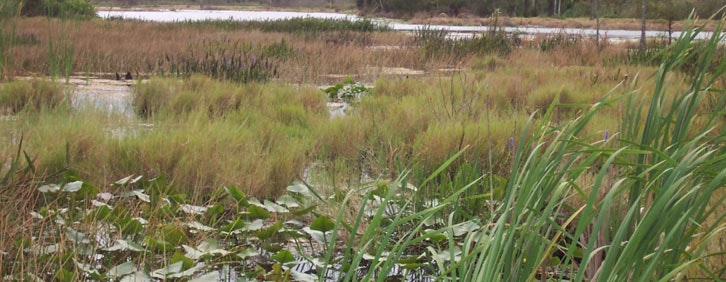Marshes

Marshes are defined as wetlands frequently or continually inundated with water, characterized by emergent soft-stemmed vegetation adapted to saturated soil conditions. Nutrients are plentiful and the pH is usually neutral leading to an abundance of plant and animal life.
Most of the marshes within Northern are non-tidal marshes which are the most prevalent and widely distributed wetlands in North America. They frequently occur in the shallow water along the boundaries of lakes and ponds. Water levels in these wetlands generally vary from a few inches to two or three feet, and some marshes may periodically dry out completely.
Highly organic, mineral rich soils of sand, silt, and clay underlie these wetlands, while lily pads, pickerel weed , reeds, and bulrushes provide excellent habitat for waterfowl and other small mammals.
Due to their high levels of nutrients, freshwater marshes are one of the most productive ecosystems on earth. They can sustain a vast array of plant communities that in turn support a wide variety of wildlife within this vital wetland ecosystem. As a result, marshes sustain a diversity of life that is way out of proportion with its size. In addition to their considerable habitat value, non-tidal marshes serve to mitigate flood damage and filter excess nutrients from surface runoff.
–Source: epa.gov
Units of Development with Marshes:
- Unit 2C- Alton
- Unit 5A- Vista Center
- Unit 9A/9B- Abacoa
- Unit 11- PGA National
- Unit 16- First Park South Florida
- Unit 19- Regional Center (Gardens Mall)
- Unit 21- Old Marsh
- Unit 23- The Shores
- Unit 24- Ironhorse
- Unit 27B- Botanica
- Unit 29- North Fork
- Unit 43- Mirasol
- Unit 44- Bear's Club
- Unit 45- Paseos
- Unit 49- Northern Palm Beach County Business Park
